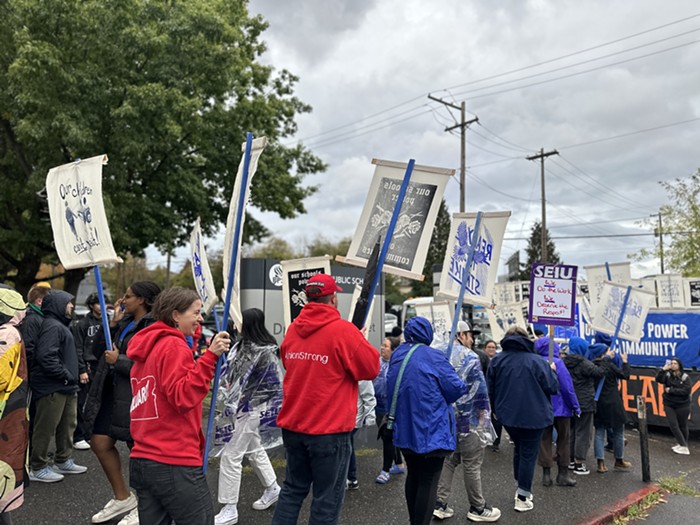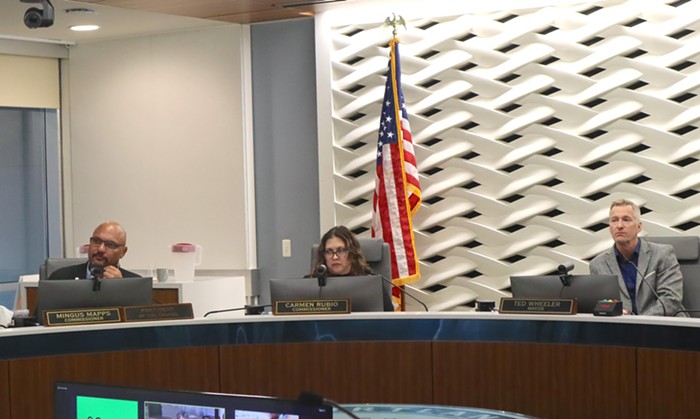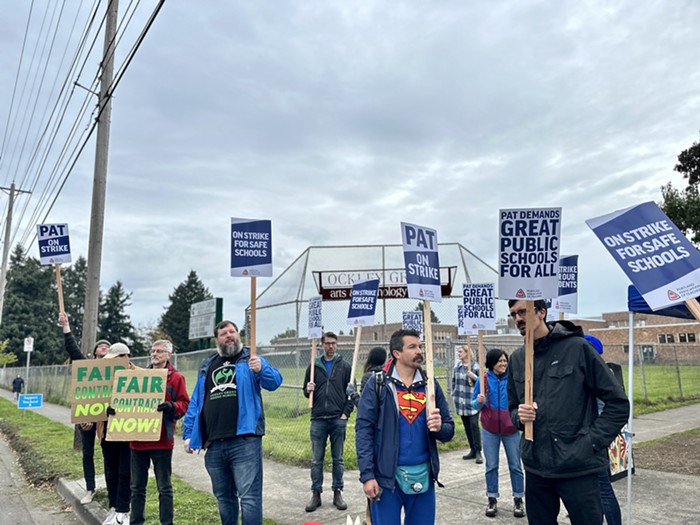As the Multnomah County auditor, Steve March mostly concerns himself, understandably, with county business. He's looked at the sheriff's troubles with overtime and the county's overspending on cell phones. And he even created a helpful tool to let you know whether anyone in county government was taking those recommendations seriously.
Now March has widened his lens rather significantly. The interactive report the Multnomah County Auditor's Office released yesterday isn't concerned with misspending in the Multnomah Building—it's taking on the state constitution. March is preaching the woes of Oregon's oft-maligned property tax structure. More importantly, his staff has waded through mounds of data to give you an idea why you should care.
The short answer: Our property tax system is horribly inequitable, with people in some of the county's poorest areas paying taxes vastly out of step with people in more well-to-do areas. What's that look like? Check out this map in the new report, which examines how property taxes for homes might change if they were anchored in a property's market value (which is not how it works now; I'll get to that in a second).

- Multnomah County Auditor's Office

So if homeowners' property taxes were tied strictly to market value, folks in the well-gentrified areas in inner NE/SE would expect to see their taxes rise—in some cases considerably. And people in Gresham and Fairview, where the gelato shops and twee beer bars have been slower to proliferate, would see some pretty solid relief (as would people in East Portland and the West Hills).
"This is gonna change at some point," March said yesterday as we went over the report in his office. "It's gotten so inequitable I believe it violates the equal protection clause of the federal constitution."
The fault, in March and many other people's eyes, lies largely in Measure 50, the 1997 switch that fundamentally changed how Oregon properties are taxed.
In order to provide some tax relief, the measure largely decoupled your property tax bill from current market values. Instead, it set your bill at 90 percent of your home's market value in 1995-96, and made it so it could only rise at a maximum of 3 percent a year—twee beer bars or no.
And it worked! Oregonians were paying less tax. But Measure 50 created some serious problems too. One biggie, March says, is that the market value on the books for 1995-96 wasn't always a true reflection of the property's value. Whole swaths of the state may have been locked in at values under their actual worth—with a big limit on how quickly they could increase. It's complicated, and there's a lot more, but the upshot is that progressive Oregon is doing a very bad job of fairly spreading the property tax burden.
It's not just homeowners, obviously. By March's estimation, the bulk of industrial properties in the county should be paying less property tax. And most commercial property owners should be paying far more. Apartment buildings, too.
Go to the report if you're curious how your neighborhood—even your street—stacks up.
It's not clear how these scenarios play out in other parts of the state, and March makes clear he's not advocating any specific tax plan. But he says our system needs to be tied more-closely to a piece of land's actual value on the market. And he felt he should say something, even if it is a touch out of step with the usual duties of a county auditor.
"When a state issue impacts county residents so significantly, it's important to speak up," he says. "And, more importantly, to show data."


















